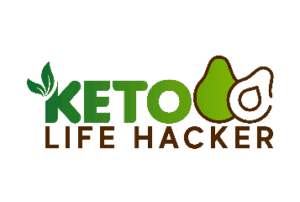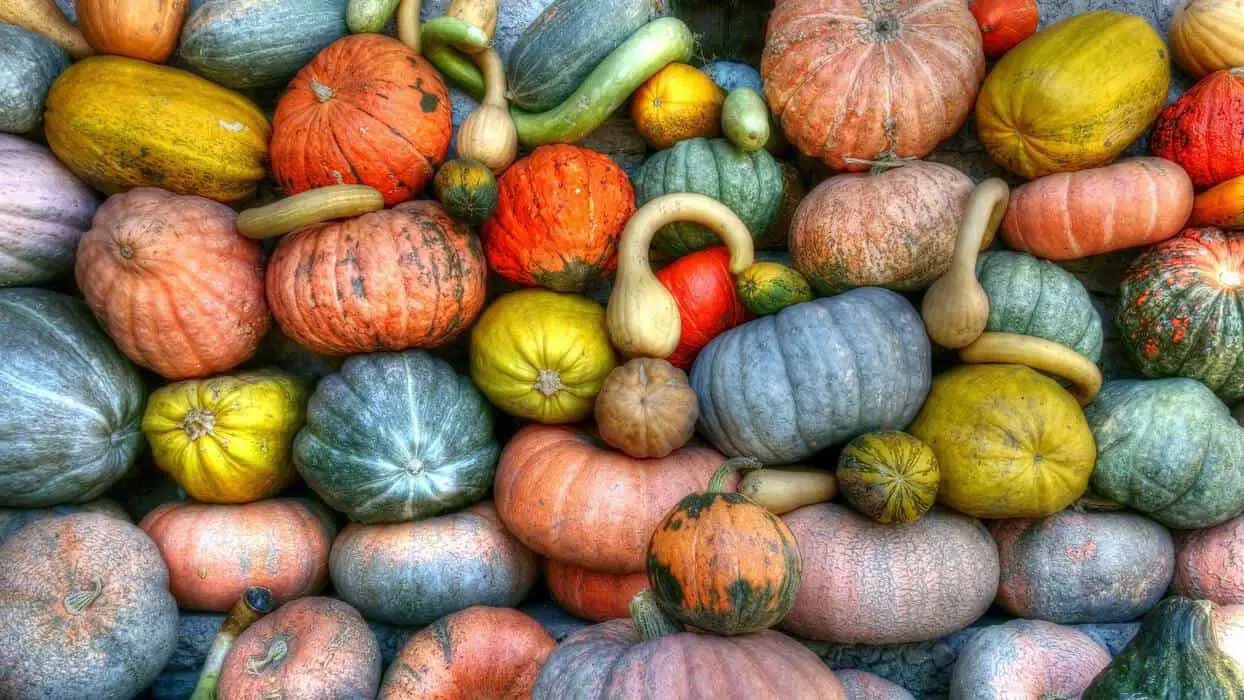Vegetables and low carb, low sugar fruits are some of the best staples of the ketogenic diet.
However despite all of these nutritious benefits, certain fruits and vegetables aren’t as keto-friendly as others. That’s why I’ve decided to dig deep and lay out all the facts so you can be an informed keto dieter.
For this article, we’ll find out exactly how keto-friendly squash is.
What Is Squash?
Squash is characterized as a family of different fruits (I know, not a vegetable like you may have thought) that all have different flavor profiles and nutritional makeups.
The types of squash that are traditionally eaten based on the seasons that they are best grown in. The two main groups of squash are winter squash and summer squash.
Examples of winter squash include:
- Kabocha – 7 grams of carbs per 100 gram serving
- Turban – 6 grams of carbs per 100 gram serving
- Butternut – 12 grams of carbs per 100 gram serving
- Pumpkin – 6 grams of carbs per 100 gram serving
- Sweet dumpling – 6 grams of carbs per 100 gram serving
- Acorn – 15 grams of carbs per 100 gram serving
- Delicata – 10 grams of carbs per 100 gram serving
- Hubbard – 8 grams of carbs per 100 gram serving
- Spaghetti – 6 grams of carbs per 100 gram serving
Examples of summer squash include:
- Zephyr – 3.4 grams of carbs per 100 gram serving
- Cousa – 3.4 grams of carbs per 100 gram serving
- Zucchini – 3.1 grams of carbs per 100 gram serving
As you can see, the summer squash varieties are much more low carb than the winter ones, which makes them some of the most frequently used when it comes to keto-friendly recipes – especially zucchini squash, since it’s usually the easiest to find in most grocery stores and farmer’s markets.
Is Squash Keto-Friendly?
Squash is generally keto friendly, but you’ll want to be extra careful when cooking with winter squash. It’s not likely that you’ll have a 100g serving for every meal, but it’s still something you’ll want to measure in order to avoid risking losing your ketosis.
I try to stick away from acorn squash, because it’s very dense, and even just a cup of it can contain sometimes up to 100 grams, which means 15 carbohydrates! However other common winter squashes like butternut squash, pumpkin, and spaghetti squash are typically safe in most meal portions.
It’s a good rule of thumb to always weigh out whatever squash you’re cooking with (before adding any heat) to get the most accurate idea of the carbs you’ll be consuming.
That’s why I generally try to stick with summer squashes like zucchini when I’m making dishes where they’re the main ingredient. Zucchini is a great vegetable because it easily takes on the flavor of any dish you’re cooking it in, and it’s own flavor profile is versatile and works with almost anything. Later in this article we’ll get to some of my favorite keto-friendly squash recipes.
Now that we’ve seen some of the downsides of winter squash vs summer squash, let’s get into the overall health benefits of squash, and see what exactly makes them one of the best keto-friendly fruits (or veggies if you’re still not convinced) for most dishes.
Benefits of Squash
- Boosts immunity
Squash is an important source of a variety of nutrients, including magnesium, vitamin C, potassium, and other antioxidants. These nutrients have all been proven to contribute to boosting our bodies’ immunity, protecting us from viruses and infections from free radicals, and keeping us energized.
- Helps manage diabetes symptoms
On top of those other nutrients, squash is also an excellent source of B-complex vitamins, all of which are important for our bodies’ metabolic activity. When metabolic activity is optimal, sugar is metabolized faster, which in turn helps to minimize diabetes symptoms. Additionally, winter squash varieties are known to have high levels of pectin, and contribute to stabilizing glycemic levels, which is very important for those struggling with diabetes.
- Anti-inflammatory properties
All forms of squash are known to have anti-inflammatory properties, which can help with conditions like arthritis and gout. These properties come from the high levels of omega-3 fatty acids in squash, as well as arotenoids like lutein, zeaxanthin, and beta-carotene. The anti-inflammatory benefits of it have also been linked to reduced gastric ulcers.
- Prevents infections
The natural immune-boosting abilities that are found in squash are great for general illnesses and viruses, but it has also been proven to help with fighting off foreign bodies and infections. Particularly, the seeds can be eaten or chewed in order to get a plethora of infection fighting benefits.
- Improves lung health
Vitamin A is the most prevalent in all types of squash, and it has a lot of cool upsides. One of the biggest is that consumption of vitamin A has been directly linked to reduced risk of lung cancer, emphysema, and a general improvement of overall lung health.
- Improves heart health
The magnesium and potassium that are present in most types of squash have great benefits for your heart health. Specifically when combined, these two nutrients work together to lower cholesterol, improve circulation, and reduce blood pressure levels.
Potassium is known as a vasodilator, which means that it works by relaxing the tension of blood vessels and arteries, which then helps to increase blood flow and reduce the amount of stress that is placed on the heart.
Additionally, the high levels of folate that are found in squash are able to neutralize harmful levels of homocysteine, which has been linked to increased risk of developing cardiovascular diseases.
- Improves vision
Another great upside to vitamin A, is it’s effect on your vision. When you eat a serving of squash, you’re getting nearly 400% of your recommended daily amount of vitamin A, because of the large quantities of beta-carotene that come with it. Beta-carotene is an essential nutrient when it comes to eye health, and has been directly connected to improved vision.
- Helps with digestion
Squash is rich in dietary fiber, which has been proven to help regulate digestive movements and processes, and reduce flaring up of symptoms like nausea, bloating, and acid reflux.
Keto-Friendly Squash Recipes
So now that we know that squash is generally keto-friendly, and can see all of the incredible health benefits that come with it, let’s see how it can be incorporated into a keto diet.
Here are some of my favorite keto-friendly recipes for it:
-
Low Carb Zucchini Fritters
Zucchini fritters are a great, keto-friendly take on hash browns. They can be served with breakfast, lunch, dinner, or even just used as a snack on their own. What makes them even better, is that the recipe is fairly simple:
-
- Grate or shred zucchini, toss it with salt in a colander, let it drain
- Squeeze it dry, mix with eggs, cheese and flour
- Drop spoonfuls of the mixture into a pan and cook until the zucchini fritters are golden brown on both sides and are completely firm in the middle
-
Keto Southern Squash Casserole
This squash casserole recipe is great for when you’re craving a hearty dinner. The directions are fairly simple too, The ingredients you’ll need include:
-
- ¼ cup grated parmesan cheese
- 4 tablespoons butter or ghee
- 3 eggs
- teaspoon cayenne pepper
- ¼ teaspoon ground nutmeg
- 6 cups diced yellow squash
- ½ cup diced onion
- 1 cup heavy whipping cream
- 1 teaspoon Himalayan sea salt
- ½ teaspoon black pepper
Directions:
-
- Preheat your oven to around 350 degrees F
- In a skillet, melt butter or ghee over medium heat until pan is hot
- Add squash and onion and saute them both until the squash is tender.
- Place your squash mixture evenly into the bottom of of a 9 by 13 inch dish
- In a mixing bowl combine the rest of the ingredients except for the grated parmesan cheese
- Mix thoroughly
- Pour the mixture over the squash
- Top with the grated Parmesan cheese
- Bake for roughly 45 minutes until the cheese has browned and the casserole has set.
- Let sit for 10-15 minutes.
- Serve either warm or at room temperature.
-
Cheesy Spaghetti Squash Skillet
This recipe is perfect for those craving spaghetti pasta. Spaghetti itself may not be keto-friendly, but that doesn’t mean you can’t get close to it with keto-friendly substitutes.
Directions:
-
- Heat a large skillet and add ground beef into it.
- Season the skillet with salt and pepper and cook for 5 minutes, stirring frequently so that the beef is in fine bite-size pieces rather than large chunks.
- Add a marinara sauce to the mixture and cook for 3 minutes.
- Add your spaghetti squash and parmesan cheese to the mixture and stir them together to combine.
- Top with the shredded mozzarella cheese.
- Bake at 375 degrees for 20 minutes or at least until the cheese has started to melt and turn golden brown.
-
Keto Pumpkin Spice Latte

This is one of my favorites for during the holidays. One of my favorite drinks before going on the keto diet was Starbucks‘ Pumpkin Spice Latte. While it definitely isn’t keto-friendly the way they make it, I’ve found a pretty good workaround that’s still low carb and low sugar.
Ingredients:
-
- 3 tbsp coconut oil
- 1/2 tsp vanilla
- 1 tsp stevia (or a sweetener/extract of your choice, I switch things up with Monk Fruit syrup sometimes)
- 3 tbsp organic pureed pumpkin
- 3 cups brewed coffee
- 1 cup full-fat milk
- 3 tbsp coconut oil
- 1 tbsp unsalted butter
- 1 tsp pumpkin pie spice
First you’ll want to mix the pumpkin puree, butter, coconut oil, pumpkin pie spice, stevia, and vanilla with a whisk, hand mixer, or automatic mixture to combine.
I personally like to use the KitchenAid Mixture. It saves me a ton of time, and works with attachments that help with other types of cooking and baking too. I picked up mine on sale over at Amazon.com.
From there, you’ll want to warm up some milk in a saucepan in a low heat. Then in a blender, mix the pumpkin spice base, coffee, and warmed milk for about 30 seconds until frothy like a latte.
Keto Zucchini Fries
If you’ve been dealing with fast food cravings, zucchini fries are a perfect snack to keep you satisfied.
Ingredients:
-
- 2 eggs
- 1 tsp of onion powder
- 2 lbs of zucchini
- 3 tbsp of olive oil
- 1 cup of almond flour
- 1 cup of grated parmesan cheese
- ½ of tsp ground black pepper
Directions:
-
-
Preheat your oven to 400°F, and then line a baking sheet with parchment paper as preparation
- Crack your eggs into a bowl and whisk together until smooth
- Mix the almond flower, parmesan cheese, and other spices into a different bowl
- Cut the zucchini into sticks long ways, after removing the seeds
- Dip the zucchini sticks in the almond flour and spice mixture until they are completely covered. Then dip them in the egg batter, and once again in the almond mixture (If you’ve ever deep fried food, you’ll know this method)
- Place the zucchini sticks on the parchment paper, and then drizzle on olive oil
- Bake in the oven for 20 to 25 minutes until your fries have browned evenly. Serve with your favorite keto-friendly condiments
-
Conclusion
As we’ve seen, some types of squash are much more carb-dense than others, but all forms can be included in a healthy ketogenic diet in moderation.
Zucchini is by far one of the best and widely available variants to use, and it’s use cases stem far beyond the recipes I’ve included above.
Do you have any favorite keto-friendly zucchini recipes? Leave a comment below!

